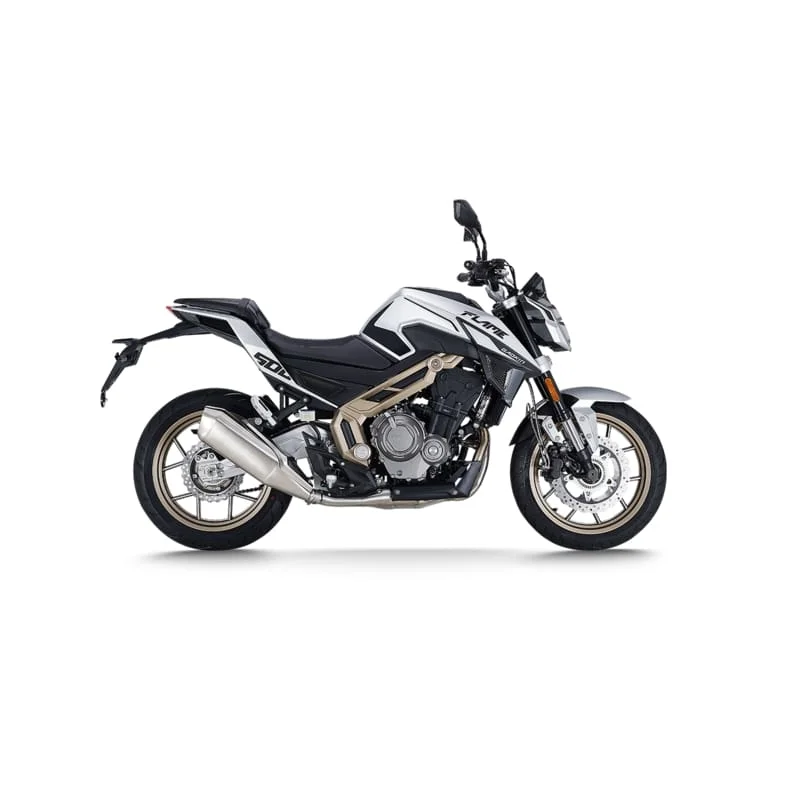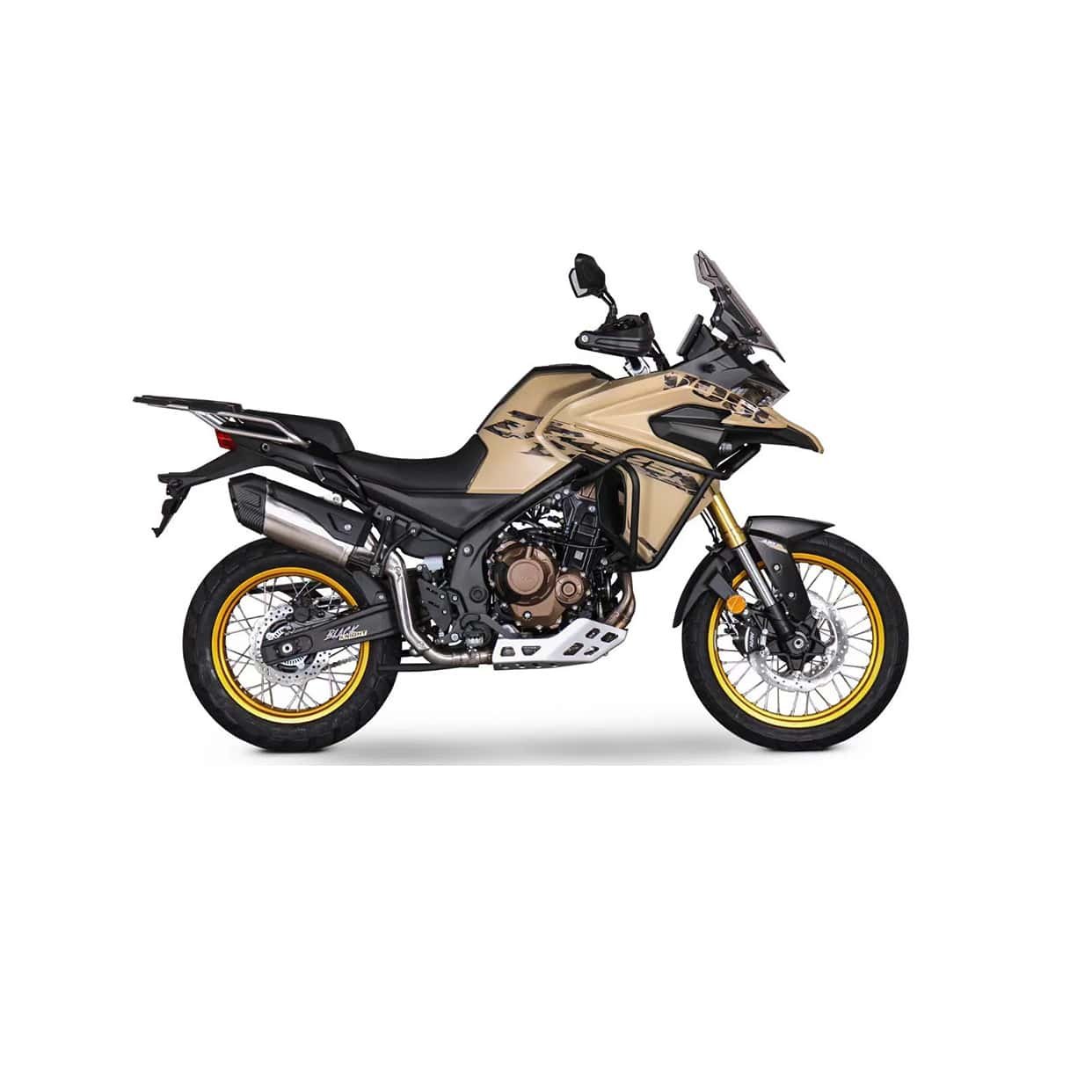⚡ CFMOTO 675NK Review: Full Specs, Features & First Look at This Middleweight Powerhouse
🔧 CFMOTO 675NK Specifications
| Category | Specification |
|---|---|
| Engine | 675cc, Inline 3-cylinder, DOHC, liquid-cooled |
| Power | 70 kW (94 hp) @ 11,000 rpm |
| Torque | 70 Nm @ 8,250 rpm |
| Transmission | 6-speed, slipper clutch, upshift quick-shifter |
| Frame | Tubular steel with aluminum alloy swingarm |
| Front Suspension | KYB 41mm USD fork, fully adjustable |
| Rear Suspension | KYB monoshock, adjustable preload & rebound |
| Front Brakes | Dual 300mm discs, J.Juan 4-piston calipers |
| Rear Brake | 240mm disc, J.Juan single-piston caliper |
| ABS | BOSCH dual-channel |
| Traction Control | Two-level, switchable |
| Tires | Front: 120/70 R17; Rear: 180/55 R17 |
| Wheelbase | 1,400 mm |
| Seat Height | 810 mm |
| Fuel Capacity | 15 liters |
| Weight (Wet) | 189 kg |
| Display | 5-inch curved TFT with smartphone connectivity |
| Lighting | Full LED with ESS emergency brake light |
| Colors | Glacier White, Tundra Grey |
| Warranty | 3 years (extendable to 5 years in some regions) |
| Price (UK) | £6,199 |
🚀 Performance and Handling
At the heart of the 675NK lies a newly developed 675cc inline three-cylinder engine, delivering a robust 94 horsepower and 70 Nm of torque. This powerplant ensures brisk acceleration, with a 0–100 km/h sprint achieved in just 3.9 seconds.
The motorcycle's chassis, featuring a tubular steel frame paired with an aluminum alloy swingarm, provides a balanced and agile riding experience. The fully adjustable KYB suspension setup allows riders to fine-tune the bike's handling characteristics to their preference.
🧠 Technology and Features
The 675NK is equipped with a suite of modern technologies aimed at enhancing both safety and rider engagement:
TFT Display: A 5-inch curved full-color TFT screen offers clear visibility of essential information, including speed, gear position, and navigation prompts.
Connectivity: Bluetooth and Wi-Fi capabilities enable seamless integration with the CFMOTO Ride App, allowing for ride data analysis and system updates.
Safety Systems: Standard features include BOSCH dual-channel ABS and a two-level, switchable traction control system, providing added confidence in various riding conditions.
Lighting: Full LED lighting, complemented by an ESS emergency brake light, ensures visibility and safety during night rides or sudden braking scenarios.
🛠️ Build Quality and Design
The 675NK showcases CFMOTO's commitment to quality and design excellence. Its aggressive styling, characterized by sharp lines and a muscular stance, is complemented by meticulous build quality. The motorcycle's ergonomics cater to a wide range of riders, offering a comfortable upright seating position suitable for both city commuting and spirited weekend rides.
💬 Frequently Asked Questions
1. What is the top speed of the CFMOTO 675NK?
The 675NK has a top speed of approximately 200 km/h (124 mph), making it competitive within its class.
2. Does the 675NK support smartphone connectivity?
Yes, it features Bluetooth and Wi-Fi connectivity, allowing integration with the CFMOTO Ride App for ride analytics and system updates.
3. Is the traction control system adjustable?
The motorcycle comes with a two-level, switchable traction control system, providing flexibility based on riding conditions and rider preference.
4. What is the fuel efficiency of the 675NK?
While exact figures may vary, the 675NK is expected to offer fuel efficiency in the range of 20–25 km/L, depending on riding habits and conditions.
5. Are there any color options available?
The 675NK is available in two color schemes: Glacier White and Tundra Grey.
6. What warranty does CFMOTO offer for the 675NK?
CFMOTO provides a standard 3-year warranty for the 675NK, with the possibility of extending it to 5 years in certain regions, subject to terms and conditions.
🏁 Conclusion
The CFMOTO 675NK stands out as a well-rounded naked bike, offering a harmonious blend of performance, technology, and design. Its competitive pricing, coupled with a comprehensive feature set, positions it as an attractive option for riders seeking a versatile and engaging motorcycle experience.




